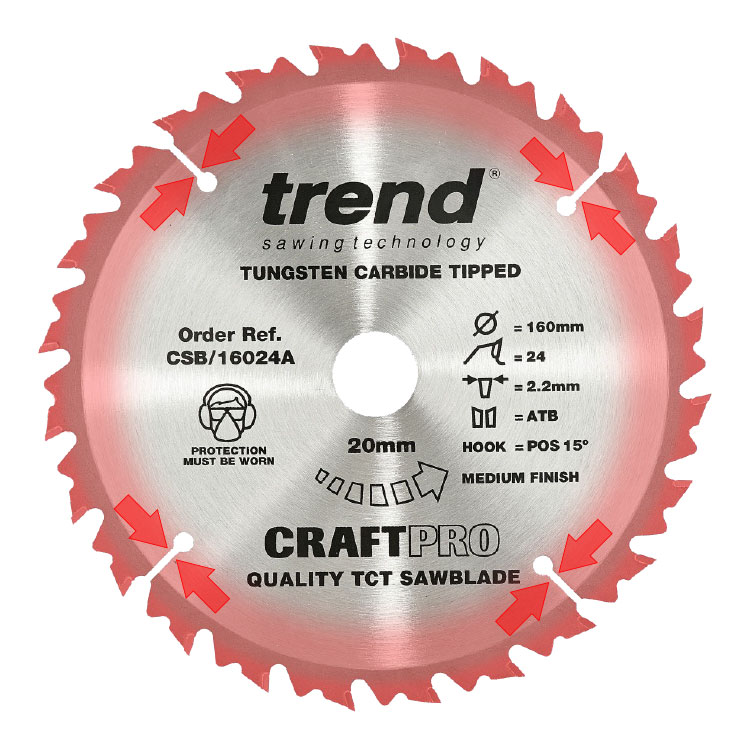We use cookies to make your experience better. To comply with the new e-Privacy directive, we need to ask for your consent to set the cookies. Learn more.
Sawblade Anatomy
When it comes to achieving the best cut quality, application performance, edge retention, cut accuracy, and user safety, every aspect of a sawblade plays a critical role. From the material used to create the blade, to its tooth count, shape, and size, each variable can have a significant impact on the final outcome of your project. Whether you're a professional woodworker, metalworker, or DIY enthusiast, understanding the features of a sawblade is essential when finding the correct sawblade for the task at hand.
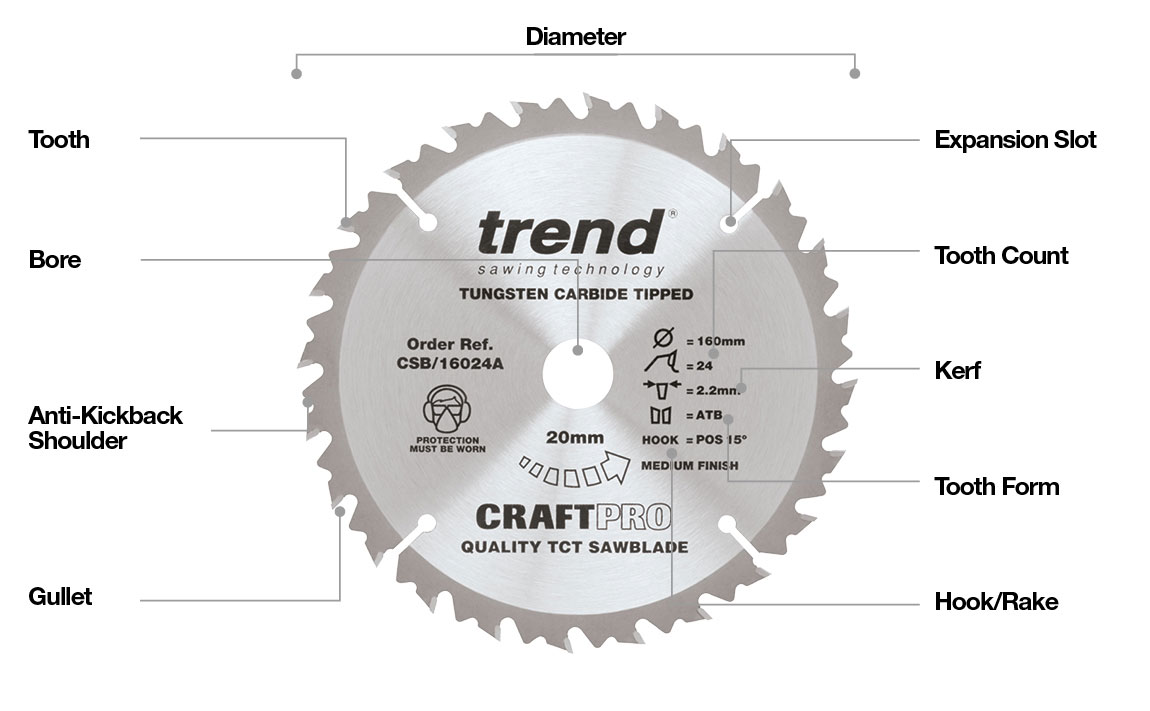
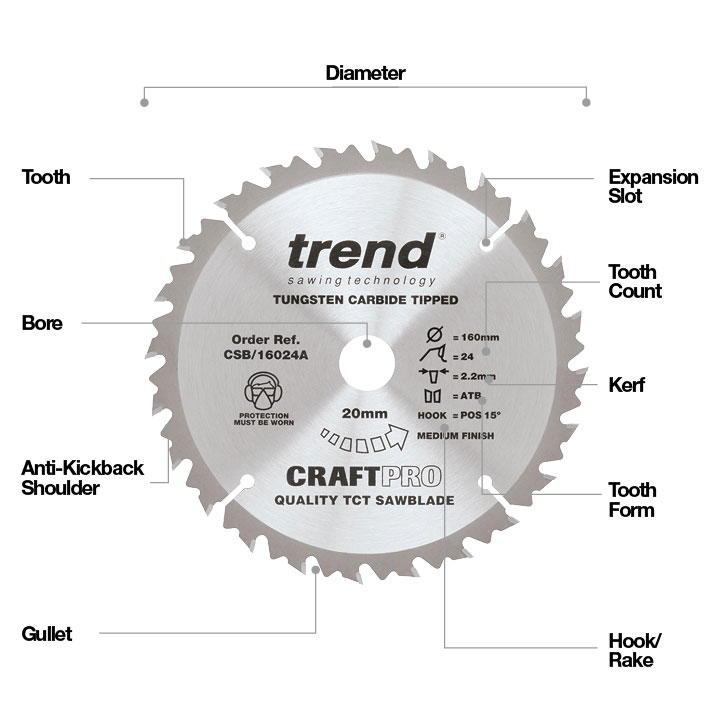
Diameter
Sawblade diameter is a critical specification to consider when selecting a saw for a particular job. The diameter of a sawblade refers to the distance across the blade, from one end to the other, usually measured in inches or millimetres. The range of sawblade diameters varies widely, from a few inches to several feet.
The diameter of a sawblade is essential because it directly impacts the depth of cut that can be achieved. A larger sawblade will typically allow for a deeper cut, while a smaller sawblade will be limited in its ability to cut through thick material. Additionally, the diameter of the sawblade can affect the quality of the cut, with larger blades generally producing cleaner, smoother cuts.
It's also important to consider the size of the saw itself when selecting a blade. A larger saw will typically be able to accommodate larger blades, while a smaller saw will be limited in its blade size options.
Our sawblades range in size from 85mm to 350mm, so no matter what type of saw or machine you're working with, we have the right blade for you. We understand that different materials require different types of sawblades, which is why we offer a variety of blade types and tooth configurations to ensure that you can achieve the perfect cut every time.
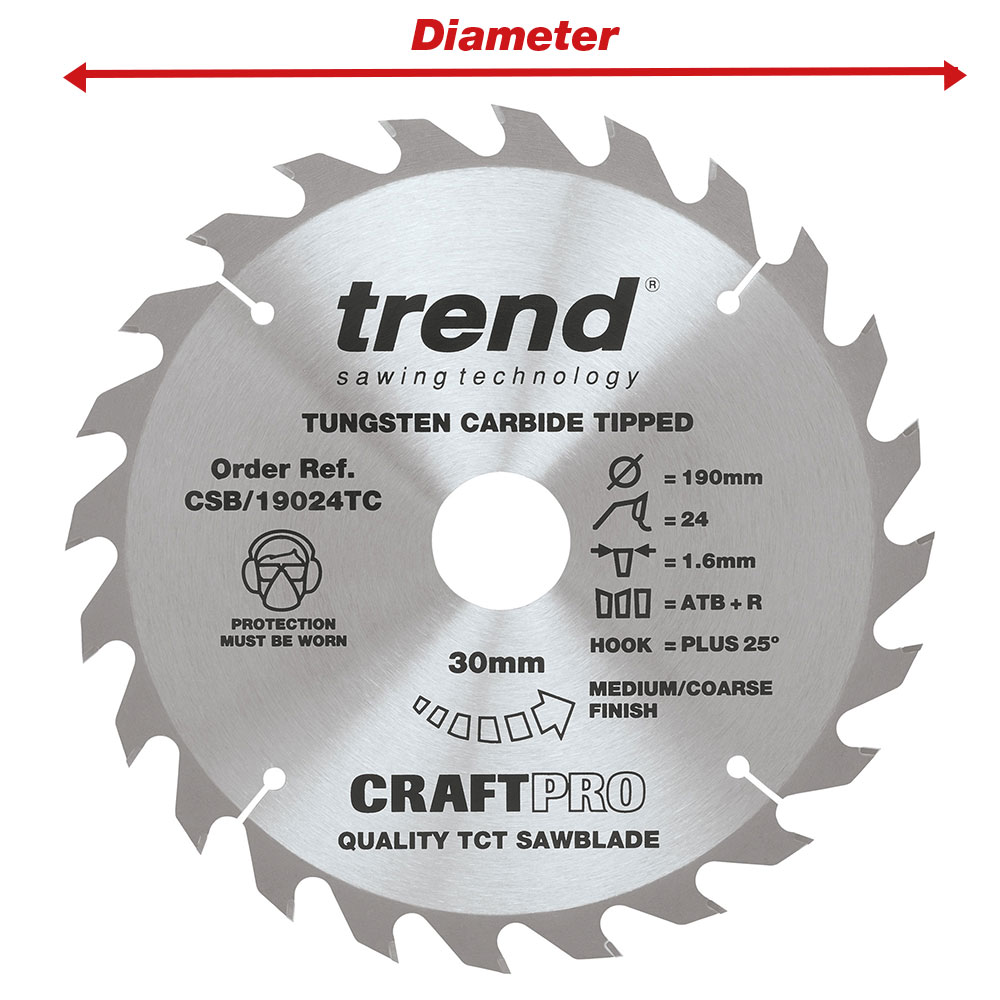

Bore
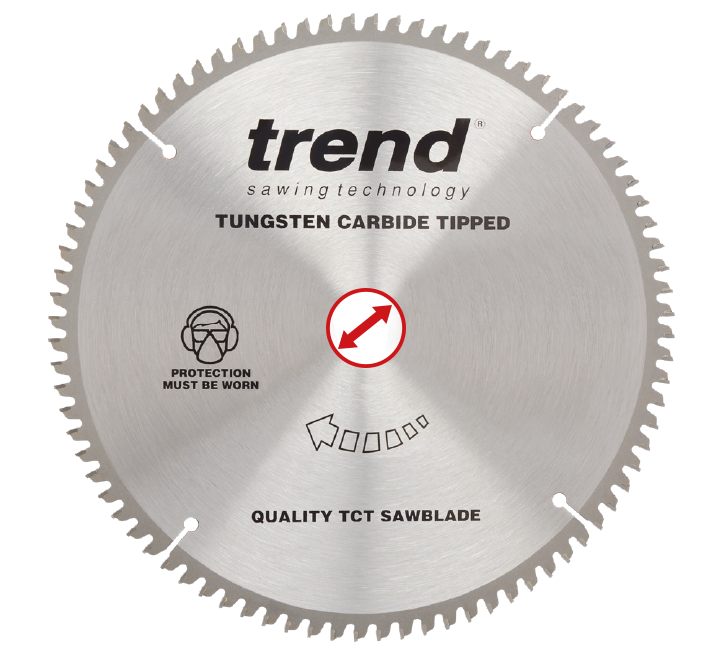

The bore of a sawblade is the diameter of the hole in the center of the blade where it mounts onto the saw's arbor or shaft. It's an important specification to consider when choosing a sawblade because it determines which types of saws the blade can be used with.
The most common bore sizes for sawblades are 16mm, 20mm & 30mm, but other sizes are also available. The size of the bore should match the size of the arbor or shaft of the saw that you plan to use the blade with. If the bore of the blade is too small for the saw, it won't fit properly and could be dangerous to use. If the bore is too large, the blade may wobble or vibrate excessively during use, which can lead to poor performance and potentially cause damage to the saw or the workpiece.
Circular saws, mitre saws, and table saws are three of the most common types of saws that use circular sawblades. These saws usually have either a 16mm, 20mm & 30mm arbor or shaft, so it's essential to choose a blade with a matching bore size. Some saws may be compatible with both bore sizes, while others may only accept one size.
Worm drive saws are a type of circular saw that uses a gear system to transfer power from the motor to the blade, which allows for greater torque and cutting power. The bore of a worm drive sawblade is unique in that it has a diamond-shaped hole with two flat sides and two curved sides. This design matches the shape of the arbor on a worm drive saw, which has a matching diamond-shaped shaft. The flat sides of the bore help to prevent the blade from spinning or slipping on the arbor during use, which is especially important when using a saw with high torque.
Worm drive saws are commonly used in heavy-duty applications, such as framing and carpentry, where high cutting power is required. The use of a worm drive sawblade with a matching bore helps to ensure that the blade is securely mounted and can withstand the high torque and cutting forces involved in these types of applications.
It's important to note that not all circular saws have a worm drive system, and not all sawblades are designed with a worm drive bore. If you're planning to use a worm drive saw, be sure to choose a blade with a worm drive bore that matches the arbor on your saw for optimal performance and safety.
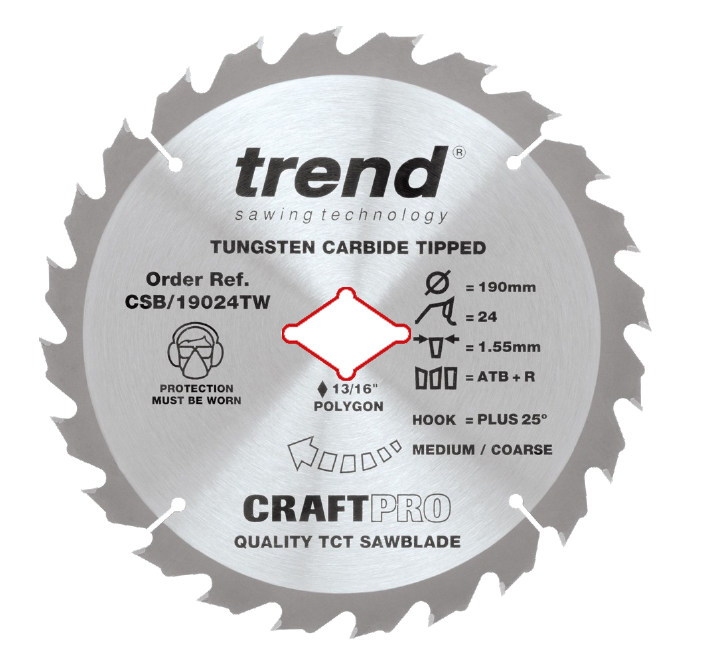

Kerf
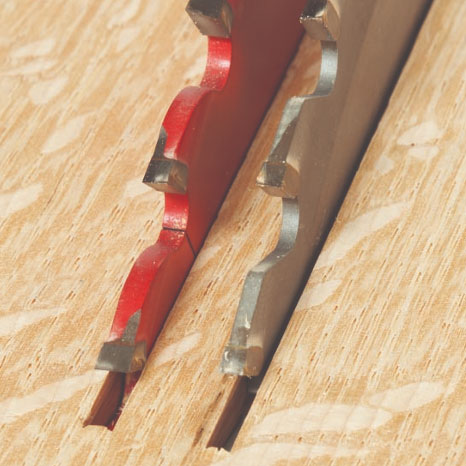

The kerf of a sawblade is defined as the width of the cutting tooth. This will create the width of the cut made by a sawblade when it is used to cut through a material such as wood, metal, or plastic. It is important because it determines the amount of material that is removed during the cutting process and therefore affects the accuracy of the cut.
A standard kerf saw blade typically has a kerf width of around 2.4mm. This width is ideal for cutting through thicker material such as hardwood or thicker pieces of softwood. Standard kerf blades are generally more durable and can withstand the stresses of cutting through dense material without bending or flexing too much.
On the other hand, a thin kerf saw blade typically has a kerf width of around 1.5mm. This width is ideal for cutting through thinner materials such as plywood, laminates, or softwoods. Thin kerf blades remove less material, which means less power is required to drive them, making them ideal for use on lower-powered & cordless saws. They are also generally lighter and easier to manoeuvre, making them a good choice for intricate cuts or for use in handheld saws.
The main advantage of using a thin kerf saw blade is that it produces less waste material, resulting in greater material efficiency and less cleanup time. It also requires less power to operate, which can optimise runtime in cordless saws.
However, there are also some disadvantages to using a thin kerf blade. For one, because it removes less material, it may not be as durable as a standard kerf blade, and may need to be sharpened more frequently. Additionally, because it is thinner, it may be more prone to bending or flexing during cutting, which can result in a less accurate cut.
AC / Mains
'Standard’ kerf
e.g. 2.4mm Ø165
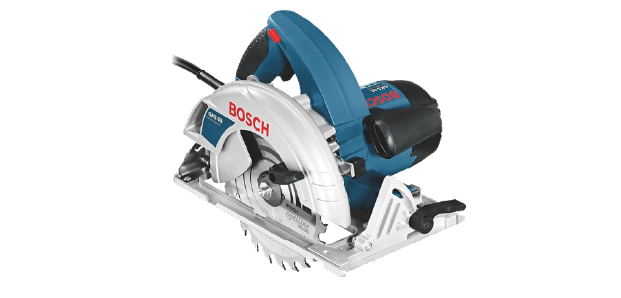

Reduced deflection
Greater accuracy
Reduced kickback
DC / Cordless
'Thin’ kerf
e.g. 1.5mm Ø165
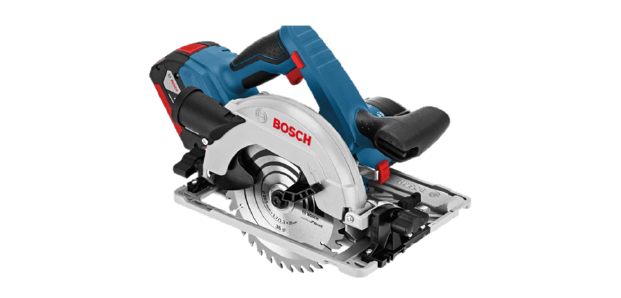

Less power drain
Longer battery life
Less sawdust/waste
Tooth Tip
Tungsten Carbide Tipped (TCT) Sawblades
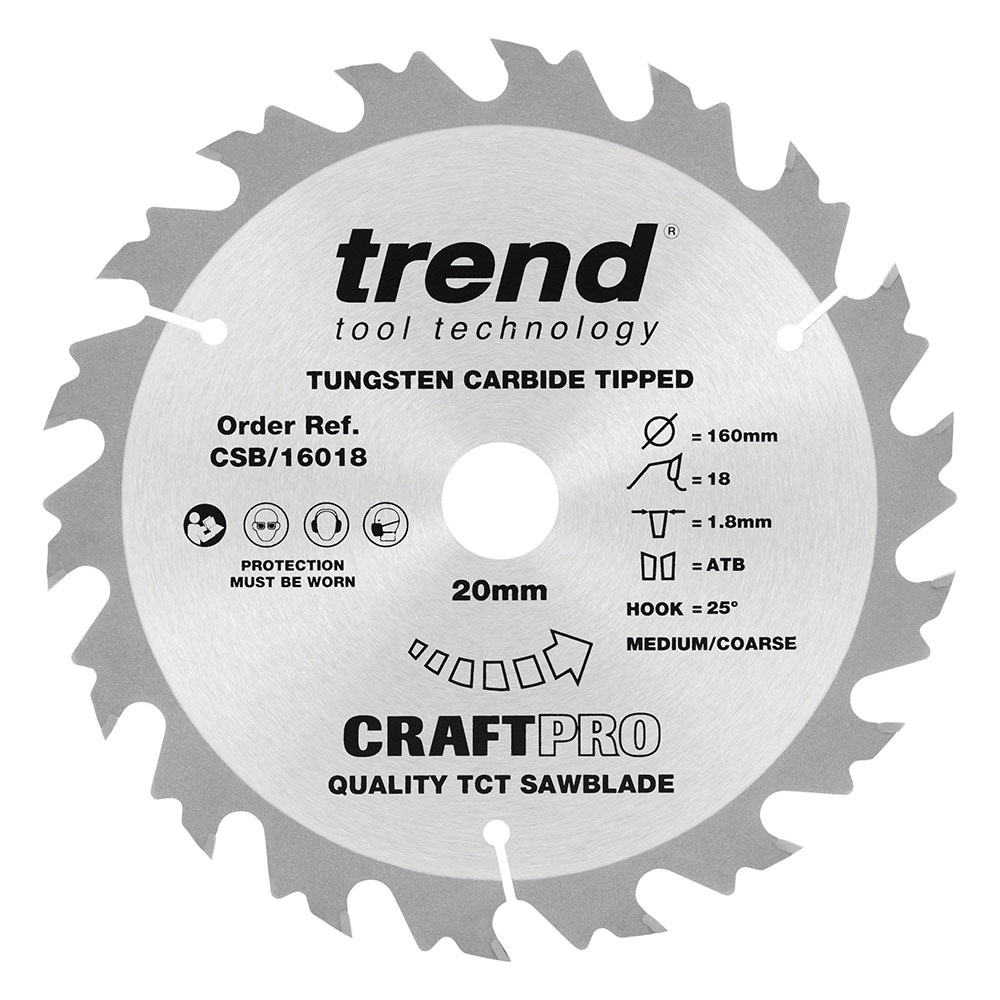

Sawblades with Tungsten Carbide Tipped (TCT) teeth are among the most commonly used sawblades in woodworking. TCT tips are made of hard-wearing tungsten carbide, which is combined with other materials to create a strong and durable cutting edge. TCT-tipped sawblades are known for their long lifespan and ability to maintain sharpness even when cutting through tough materials.
They are suitable for cutting a wide range of wood materials, including hardwoods, softwoods, plywood, particleboard, and MDF (Medium-Density Fiberboard). TCT-tipped sawblades are ideal for general woodworking applications, such as cross-cutting, ripping, and beveling.
Polycrystalline Diamond-Tipped (PCD) Sawblades
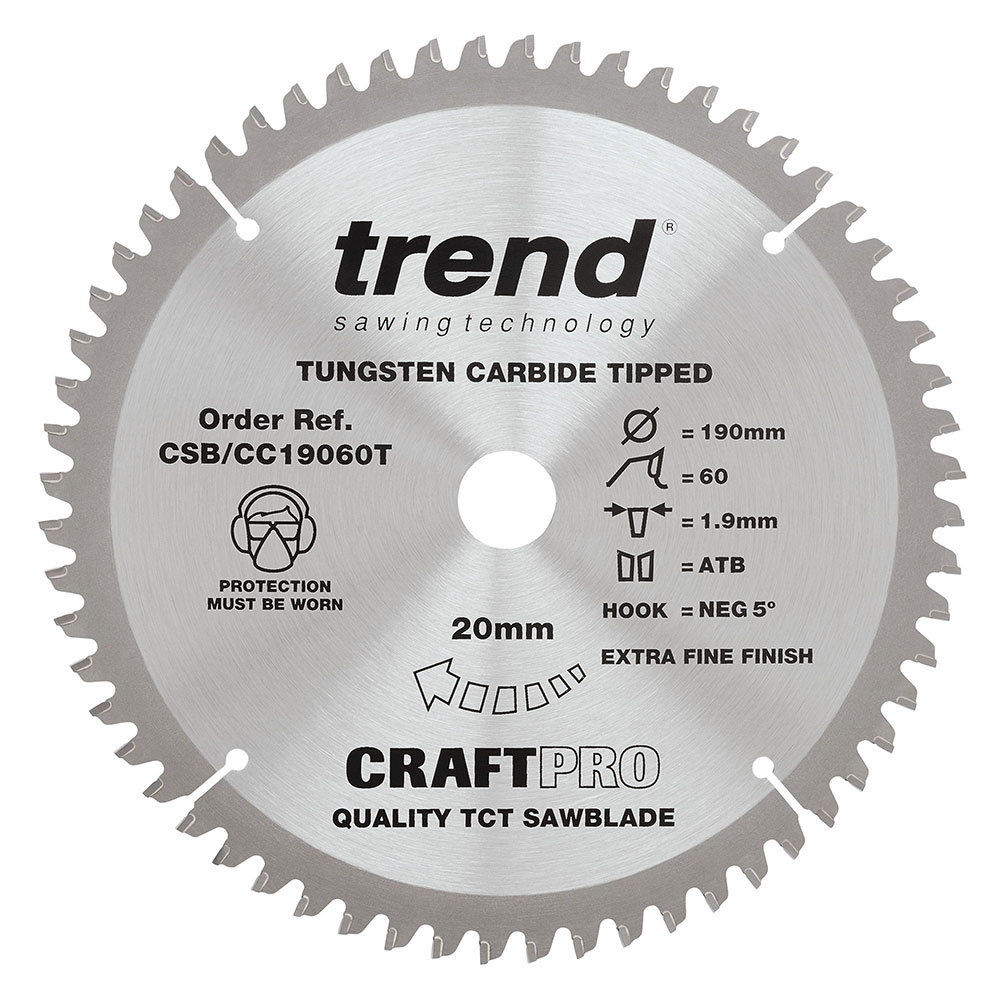

Sawblades with Polycrystalline Diamond (PCD) tips are specifically designed for cutting materials that are difficult to cut with traditional sawblades. PCD is a superhard material made of small diamond particles bonded together, providing exceptional durability and wear resistance.
PCD-tipped sawblades are ideal for cutting abrasive materials, such as laminates, chipboard, melamine, and other composites. They are also suitable for cutting materials like cement fiberboard and certain plastics. PCD-tipped sawblades are known for their ability to deliver clean, chip-free cuts in these challenging materials.
Tooth Count
The tooth count on a saw blade refers to the number of teeth present on the blade. It is an important factor to consider when selecting a saw blade because it determines the quality of the cut, the speed at which the cut is made, and the type of material the blade is suitable for. In general, blades with a higher tooth count produce a smoother cut but take longer to make the cut. Conversely, blades with a lower tooth count make the cut faster but may leave a rougher finish.
When selecting a saw blade, it is important to consider the material being cut. Different types of materials require different tooth counts to achieve the best results.
LOW Tooth Count
e.g. x24 Ø165


- Typically used for Rip Cuts
- Fewer teeth with larger gullets
- Faster feed & stock removal
- Rougher finish
HIGH Tooth Count
e.g. x60 Ø165


- Typically used for Cross-Cuts (but not always!)
- More teeth with smaller gullets
- Slower feed & stock removal
- Smoother finish
Polycrystalline Diamond Tipped blades typically have 4-8 teeth since having more is unnecessary due to PCD's high durability. It is important to note that the tooth count on a PCD blade does not affect the cut finish.
They are made using a process that involves bonding diamond particles together with a metal binder under high pressure and temperature. This creates a hard, wear-resistant material that is capable of withstanding the extreme forces generated during cutting. The result is a blade that can last up to 60 times longer than conventional carbide-tipped blades.
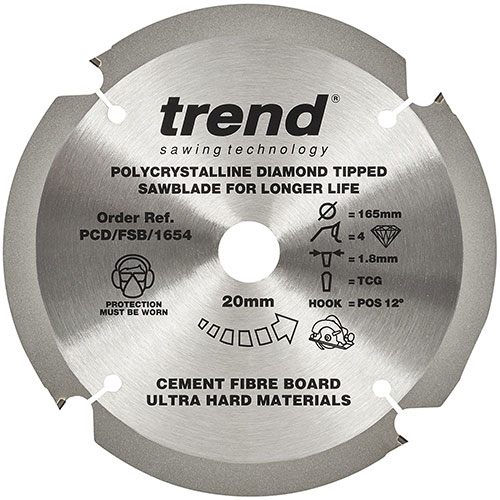

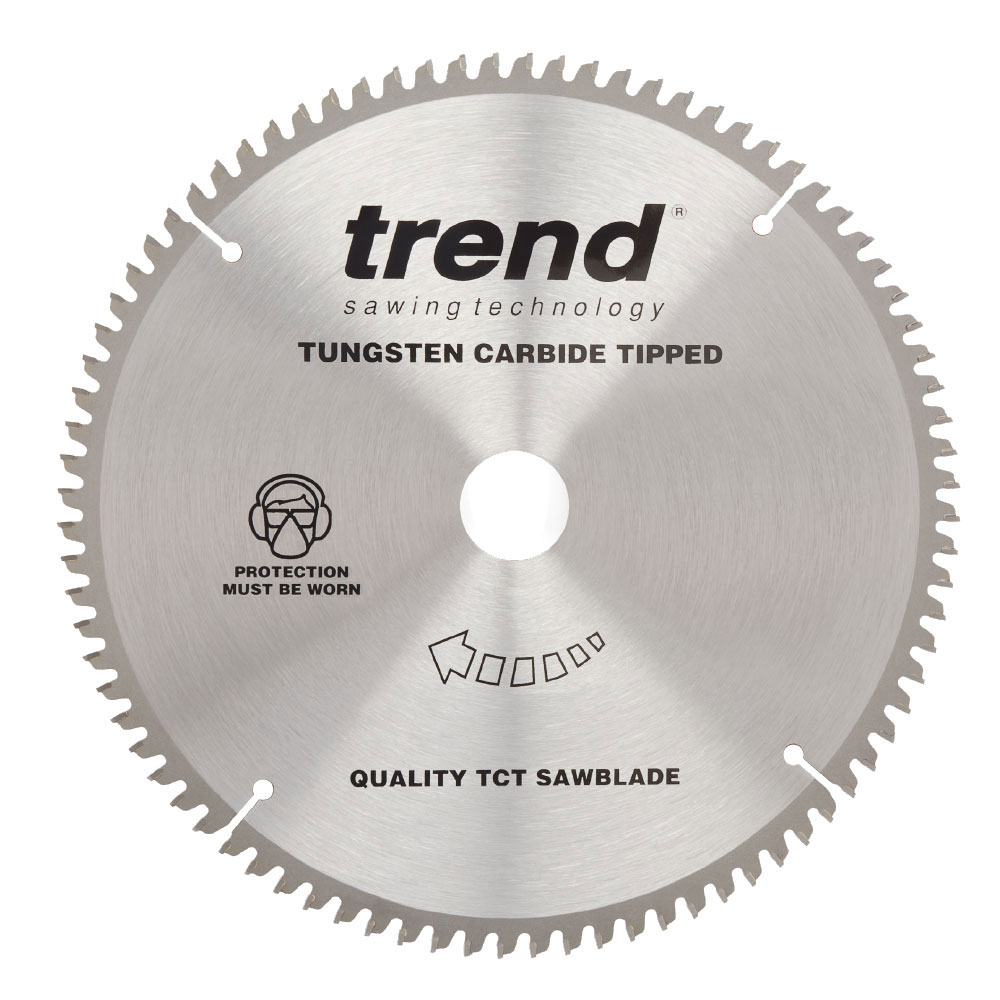

Aluminium sawblades typically have a high tooth count, typically between 80 and 100 teeth, or more. This is because aluminium is a soft and ductile material that can easily deform during cutting. A high tooth count helps to prevent "grabbing," where the material is pulled into the blade too quickly, which can cause the blade to bind or the material to warp or deform. A high tooth count also ensures a smooth and clean cut, which is especially important when working with thin sheets of aluminium.
Plastic blades, on the other hand, also typically have a high tooth count, but for slightly different reasons. While plastics are not as soft as aluminium, they are still relatively pliable and can deform during cutting. A high tooth count helps to prevent the plastic from melting or deforming under the heat generated by the blade. Additionally, a high tooth count helps to ensure a clean and precise cut, which is important when working with materials like acrylic, which can easily chip or crack if not cut correctly.
Tooth Form
One of the most important factors to consider when choosing a circular saw blade is its tooth form or the shape and arrangement of the teeth on the blade. Here are some of the most common tooth forms used on circular saw blades:
FTG
Flat Top Grind
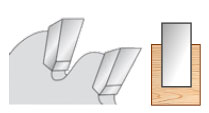

- Square flat tops on each tooth to create a flat-bottomed cut.
- Large gullets for waste removal.
- +20° bevel to aid cutting speed.
- Typically fewer teeth per inch.
- Ideal for ripping timber.
ATB
Alternate Top Bevel
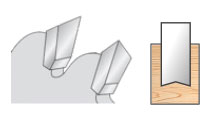

-
Teeth have alternating pitch, 1 left, &1 right.
-
+10° to +20° bevel considered ‘universal’ and balance edge retention and cut quality
-
+25° bevel cuts cleaner & slower but will dull faster
-
-5° hook for crosscuting (prevent self-feed)
-
+7°-25° hook for universal timber cutting.
- Ideal for ripping & crosscuting timber
ATBR 'Combination'
Alternate Top Bevel with Raker
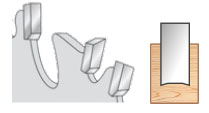

-
4 ATB & 1 raker.
-
Large gullet behind raker.
- +7°-25° hook for universal timber cutting.
- Ideal for ripping & crosscuting timber
TCG
Triple Chip Grind
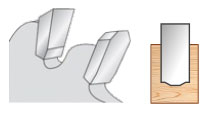

-
Alternating narrow trapezoid tooth and wide, low, flat raker.
-
Minimal chip and tear-out when cutting brittle materials.
-
-6° hook for Aluminium & Plastic (prevents ‘grab’).
-
+4° hook for Panel Trimming (slow feed & fine finish).
-
+12° hook for PCD (controlled cutting speed).
-
Suitable for hardwood, plastic, metal & composites.
Hook/Rate
Positive Hook
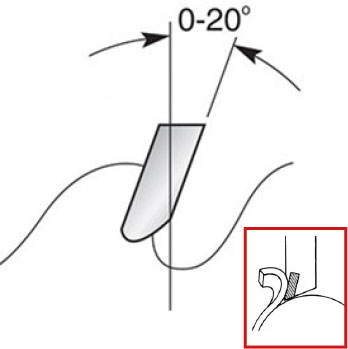

- Aggressive cutting action
- More material removed
- Faster stock removal
- Fast Feed - Tooth pulls material inward
- Low motor power
- Typically used on RIP blades
Neutral Hook
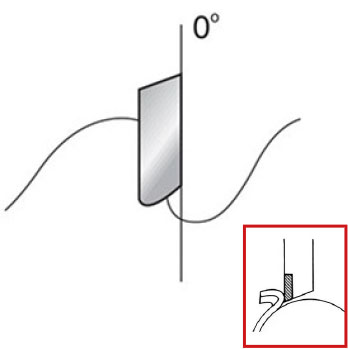

Negative Hook
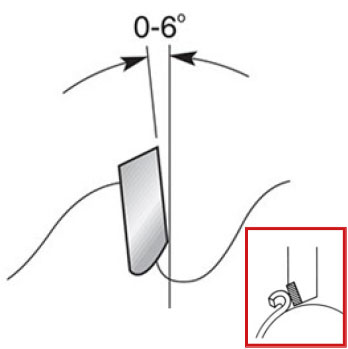

- Controlled cutting action
- Less material removed
- Slower stock removal
- Slow feed - Tooth pushes material away
- High motor power
- Typically used on CROSSCUT blades
Anti-Kickback Shoulder
Anti-Kickback Shoulders, which are commonly found on thin-kerf blades that are more likely to deflect, are designed with careful consideration to other elements such as tooth form, tooth count, hook, clearance angles, and intended use. These shoulders serve a crucial purpose, especially when dealing with problematic woods like hardwood with excessive knots or wet timber. They provide added stability and support to the blade, helping to reduce deflection and maintain cutting accuracy, even in challenging wood cutting scenarios. The thoughtful design of shoulders on thin-kerf blades makes them particularly useful in demanding cutting situations, ensuring smooth and precise cuts, while minimizing the risks of deflection or damage to the blade.
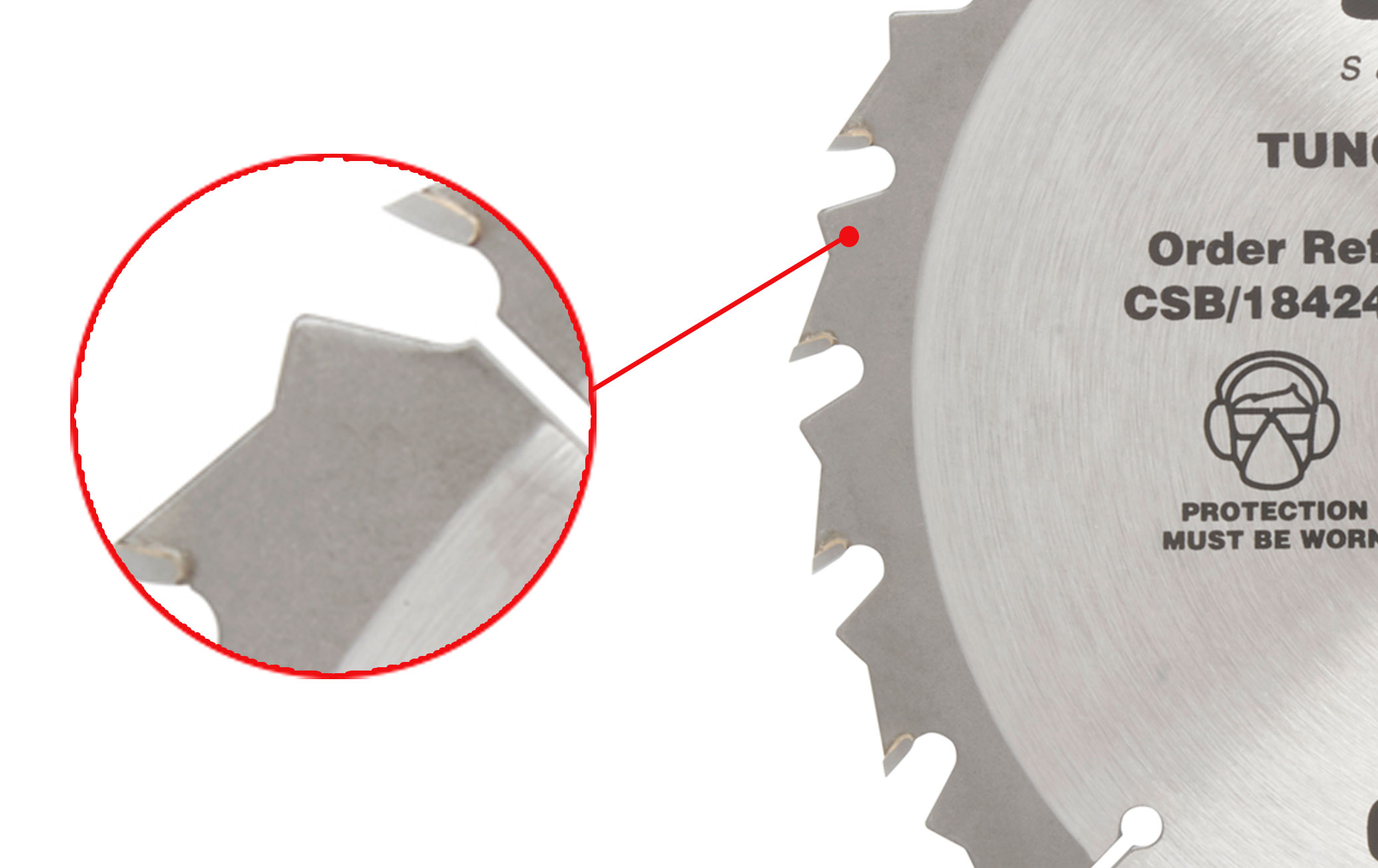

Expansion Slots
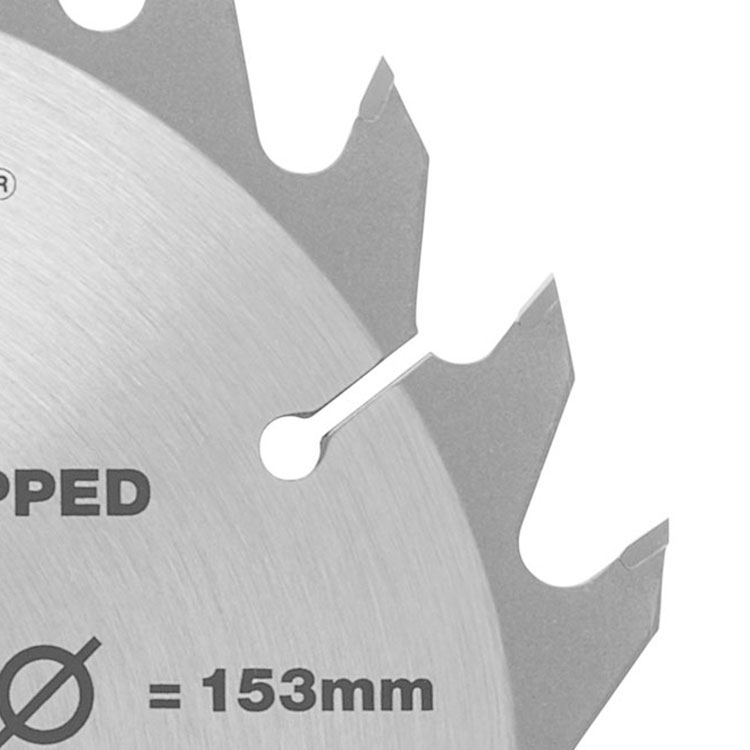

Sawblades are designed with radially cut slots in the blade body to create a heat outlet for controlled expansion and contraction, preventing warping when hot, primarily used on larger diameter blades where teeth travel faster and to prevent excessive noise, tooling marks, and poor cut quality.
The base hole is rounded (no sharp or square corners) to absorb the stress of initial impact when the carbide tip enters the material and disburse the pressure evenly throughout the blade to prevent cracking.
Sawblade expansion slots are a crucial design feature that helps to ensure the longevity, safety, and performance of sawblades.
